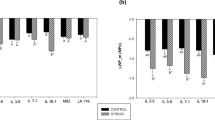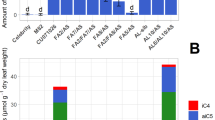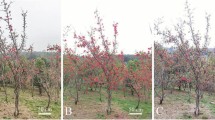Abstract
IN 1957, Eaton1 described the induction of selective male sterility in flowers formed on various cotton varieties which had been sprayed with sodium 2,3-dichloro-2-methylpropionate solutions and projected the possibility of mass-producing F1 hybrid cotton seed from rigorously inbred parents by the use of these treatments. Similar gametocidal responses to foliar sprays of this chemical have since been demonstrated by Moore2 in eleven tomato varieties. Additional gametocidal and growth regulatory properties have been described for tomatoes, cotton and sugar beets3. Further experimentation on all three crops, using foliar sprays of this chemical, invariably induced an excessive amount of female sterility in the process of achieving the desired sterility in male flower parts4. As a result, the mass production of hybrid seed in these crops using this chemical has been impractical.
This is a preview of subscription content, access via your institution
Access options
Subscribe to this journal
Receive 51 print issues and online access
$199.00 per year
only $3.90 per issue
Buy this article
- Purchase on Springer Link
- Instant access to full article PDF
Prices may be subject to local taxes which are calculated during checkout
Similar content being viewed by others
References
Eaton, F. M., Science, 126, 1174 (1957).
Moore, J. F., Science, 129, 1738 (1959).
U.S. Patents: 2,889,662 (1959). “Production of Hybrid Cottonseed by Chemically Inducing Male Sterility”; 2,948,987 (1960) “Selective Gametocidal Process”; 2,974,444 (1961) “Inducing Male Sterility in Tomatoes”; 2,994,599 (1961) “Regulating Plant Growth”.
Moore, J. F., Proc. Amer. Soc. Hort. Sci., 84, 474 (1964).
Author information
Authors and Affiliations
Rights and permissions
About this article
Cite this article
LYON, C., GARMUS, R. Chemical Control of Vegetative Growth and Fruitfulness of Tomatoes. Nature 211, 441–442 (1966). https://doi.org/10.1038/211441a0
Issue Date:
DOI: https://doi.org/10.1038/211441a0
Comments
By submitting a comment you agree to abide by our Terms and Community Guidelines. If you find something abusive or that does not comply with our terms or guidelines please flag it as inappropriate.



